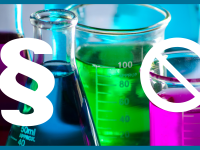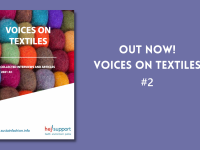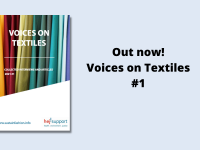Sustainability Standards in the Textile Industry

Sustainability standards are an important mechanism used in the textile industry to ensure that the environmental impacts of textile manufacturing and production are mitigated.1 These standards function to prioritize the health and safety of workers, uphold human rights as well as protect the environment.1 In recent years, the importance of these standards has come into focus, and they have gained significant traction within the textile industry.2
The two primary sustainability standards in use for organic textiles are the Organic Content Standard (OCS) and the Global Organic Textile Standard (GOTS).2
The OCS is a voluntary global sustainability standard with an objective to stimulate organic agriculture production through the establishment of requirements for certification of organic input and the chain of custody.3
Key points in the OCS are, according to Textile Exchange:
- Only material from certified organic farms (under one of IFOAM’s Family of Standards) is accepted to the OCS.
- Certification ensures that the identity of the organic content is maintained: from the farm to the final product.
- A professional, third party certification body audits each stage in the supply chain.
- Products that meet all requirements may be labelled with the OCS logo.
- The OCS is managed with the input of producers, suppliers, and brands and retailers from all parts of the globe.
The Global Organic Textile Standard (GOTS) is the worldwide leading textile processing standard for organic fibres, including ecological and social criteria, backed up by independent certification of the entire textile supply chain. It sets requirements for organic textiles throughout the production process, from the extraction of raw materials and manufacturing to product labeling.4 According to tis website, GOTS has 10,388 GOTS certified facilities in 2020, an increase of 34% with more than 4 million workers in 72 countries.
Over the past several years, these standards have significantly expanded their market, with the number of certified facilities nearly doubling for both standards between 2014 and 2019.2
In addition to organic textile standards, standards have been set for other sustainable approaches, such as those for textiles made using recycled materials.2 The two dominant sustainability standards for these textiles are the Recycled Claim Standard (RCS) and the Global Recycled Standard (GRS), both of which have also experienced significant growth in recent years.2
In order to improve the adoption of sustainability standards, the organization Textile Exchange has developed Impact Incentives, which address pricing issues by providing financial rewards to incentivize best practices thereby enabling the means to develop more sustainable practices.2
The uptake of sustainability standards within the textile industry represents progress towards a future in which fashion can become a leading industry in environmentally sound and best practices.
References
- United Nations Forum on Sustainability Standards. (2021). What are voluntary sustainability standards? Retrieved from: https://unfss.org/
- Opperskalski, S., Siew, S., Tan, E., & Truscott, L. (2020). Preferred fiber & materials market report 2020. Textile Exchange. Retrieved from: https://textileexchange.org/wp-content/uploads/2020/06/Textile-Exchange_Preferred-Fiber-Material-Market-Report_2020.pdf
- Textile Exchange. (2020). Organic Cotton Standard (OCS). Retrieved from: https://textileexchange.org/standards/organic-content-standard/
- Global Organic Textile Standard: Ecology & Social Responsibility. (2020). The Standard. Retrieved from: https://www.global-standard.org/the-standard






